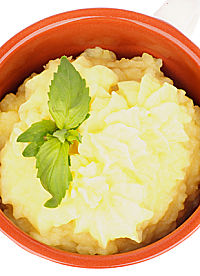![]()
Ingredient Articles
Reading Nutrition Labels
by Joseph Packo
In today’s world, visiting a grocery store, gas station, or restaurant can be a very tough ordeal when trying to figure out which foods are healthy and which are outright junk food. Labels and nutrition guides are everywhere and can end up being more overwhelming to a consumer trying to make informed decisions about their diet. I recently read the label on a bag of “healthy” chips that had separate columns depending on whether you planned on eating just 2 ounces of them or the entire bag. I wondered to myself if the average shopper who looked at that information even knew how much a 2 ounce portion of chips would look like. Furthermore, I wondered if those chips were being considered healthy due to the fact that just the 2 ounces were recommended as a serving size. There are many available sources of information online, in books, and in magazines that can help a consumer understand a nutrition label.
Here are some important tips on reading those labels and figuring out what is healthy food and what is just plain junk.
- Read the label from top to bottom. A quick scan will become easier over time, so make a habit of reading everything on the label.
- Take a look at the serving size, the number of servings per container, and how many calories come from fat. We tend to forget in a hurry that a large bottle of soda or a king size candy bar can most likely be 2 or 3 servings in itself, so go ahead and double, or even triple those listed numbers. Junk foods will have a lot of their calories coming from fat. On a 2000 calorie diet, it is recommended to consume less than 65 grams of fat per day.
- Look at the types of fat listed. Junk foods typically have trans- and saturated fats, which are the bad fats. On a 2000 calorie diet, the American Heart Association recommends consuming less than 2 grams of trans-fat daily, and less than 20 grams of saturated fat. Healthy foods will have very little, if any, trans- or saturated fats. Unsaturated fats and Omega-3 fatty acids are the types of fat that can have positive effects on cholesterol and blood sugar levels.
- The recommended daily amount of cholesterol is under 300mg, and less than 2400mg of sodium. The higher those numbers are on a product, the worse they are for you and they are most likely junk food.
- Look at the overall vitamin and mineral content on the list. Not every food will contain all nutrients; some are higher in one vitamin or mineral while others may have small amounts of several.
- Take some time looking at the sugars that a food contains. Fruits have natural sugars that will not appear on an ingredient list. Junk foods will have large amounts of sugars added which fall under many different and sometimes confusing names. A list of many of the names are at the end of this article.
- More about carbohydrates: When you pick up a product that has a high number of carbs, you should probably just put it back down. Carbs raise your blood sugar and insulin levels, which lead to storing those carbs as fat in your body and subsequent weight gain. Beneath the total carbs will sometimes be fiber, sugars, and sometimes sugar alcohols. Those numbers added together may not always equal the total carbs. It can be assumed that the missing carbs are starches, and processed foods containing starches typically raise blood glucose just like sugar, if not worse.
- The order of the ingredients in the list will tell you how much of that ingredient is contained in the food. The first item in the list is what makes up most of the product, the second is second most, and so on. If salt, fat, or sugar falls into the beginning of the list, it will most likely be junk food.
Tips on Dining Out
Restaurants can pose some challenges to someone watching their diet but it can be easy to figure out what is healthy and what is not. Many restaurants today have a nutrition guide available upon request. Remember that baked and grilled meats are healthier options as opposed to breaded, battered and fried. Salads are great, but dressings can turn them into unhealthy foods. Creamy sauces, cheese, mayonnaise, and sour cream can make pastas, meats, and vegetables taste great, but they will fall into the category of high calorie unhealthy foods. Watch the condiments!
….AKA Sugar
- Agave Nectar
- Barley Malt Syrup
- Beet Sugar
- Brown Rice Syrup
- Brown Sugar
- Cane Crystals (or "cane juice crystals")
- Cane Sugar
- Coconut Sugar, or Coconut Palm Sugar
- Corn sweetener
- Corn syrup, or corn syrup solids
- Dehydrated Cane Juice
- Dextrin
- Dextrose
- Evaporated Cane Juice
- Fructose
- Fruit juice concentrate
- Glucose
- High-fructose corn syrup
- Honey
- Invert sugar
- Lactose
- Maltodextrin
- Malt syrup
- Maltose
- Maple syrup
- Molasses
- Palm Sugar
- Raw sugar
- Rice Syrup
- Saccharose
- Sorghum or sorghum syrup
- Sucrose
- Syrup
- Treacle
- Turbinado Sugar
- Xylose
Recipes to Success!
Looking for a mashed potato substitute? Craving gravy? Visit our Recipe Section for delicious ideas to perfect your next healthy meal!
![]()
Have you joined the ITG weight loss program yet?
Let us help you achieve weight loss success in a healthy and safe manner!




